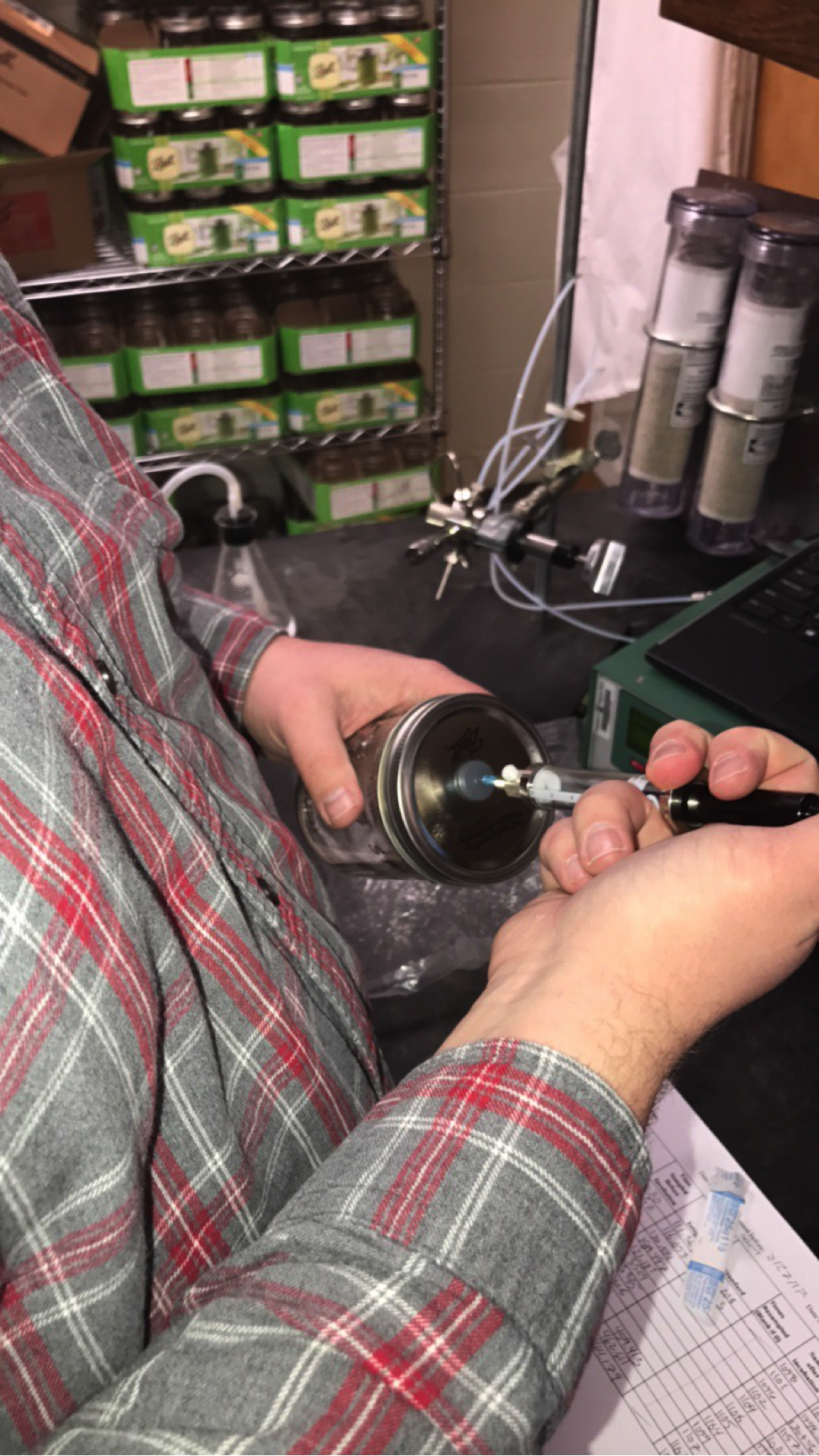Steven McBride
Carbon and soil affect Earth’s future. Here’s how.
Have you ever heard someone say, “There’s so much carbon outside today,” or “I’ve been inhaling too much carbon lately”?
Of course not. We can’t see carbon, and we might not even know it's in the air. Most of us likely also don’t know how it functions, though we might know it’s essential. You might be surprised to know that too much carbon in Earth’s atmosphere is linked to an increase in the planet’s temperature. Plants need a certain level of carbon to successfully absorb nutrients and photosynthesize. Because many plants rely on a steady climate function, the risk of too much carbon could potentially throw off the whole carbon cycle and be detrimental to the environment.
That’s where the research of Steven McBride comes into play.

McBride spent his master's at James Madison University studying the occurrence and antibiotic resistance of enterococci in turkey litter. McBride is eager to discover how the structure of microbial communities—more specifically, the microorganisms that inhabit it—affect the carbon cycle in certain ecosystems. In simpler terms, McBride wants to know how the presence of bacteria and viruses within decomposed leaf litter affect soil, and why some microbials produce more carbon than others. In an attempt to explore this, McBride has now dedicated his research to uncovering which bacteria are likely to produce varying levels of carbon and why.
McBride’s research is primarily focused on soil. To begin his experiments, McBride uses four separate jars that will each receive their own individual soil sample: three with a unique volatile organic compound (VOC) and one controlled substance with no additives. In his most recent lab study, the compounds McBride used were ethanol, methanol, and acetone.
"The cool thing about these volatile compounds is that they are these small, easy to eat compounds that don’t need water to go from one part of the soil to the other,” said McBride.
“They can diffuse through the air because they are volatile or easily evaporated. Then the bacteria or fungi can pick it up and eat it, so it’s an interesting source of food for these soil microbes that hasn’t been paid much attention to in the past.”
These VOC's stimulate activity in soil without the presence of water, which makes laboratory tests much simpler for McBride, as well as his peers who work with Michael Strickland, a soil biologist formerly at Virginia Tech but who is now at the University of Idaho. Their research is primarily focused on microbial communities and their effects on ecosystems.
So what does McBride’s daily laboratory process entail?
McBride uses regulated temperatures to identify how the addition of independent compounds (ethanol, methanol, and acetone) in soil samples will affect the soil’s ability to respirate and produce carbon. After letting them incubate overnight in coffee mug sized jars, McBride uses a gas-extracting machine that will tell him how much CO2 has been released from the soil over that 24-hour period.
"So that’s the first thing: we measure the CO2, and that will tell us whether the soil is respiring more under the different treatments,” said McBride. “But that doesn’t give us a mechanism, it just tells us that there is a difference in respiration. It doesn’t tell us the ‘how’ or the ‘why.’”

McBride has some ideas about where the future of his research is heading, and how he can attack the problem.
Since beginning his research in the fall of 2015, McBride has uncovered that the interface of microbial communities and litter substrate can lead to higher rates of decomposition. Additionally, the inclusion of VOC’s undeniably increases soil respiration and the release of carbon. The study now aims to detect why this occurs, and where exactly carbon goes.
On a bigger scale, the study attempts to look at why certain ecosystems produce more carbon than others, and what steps can be done to prevent this harm from occurring.
"There’s a possibility that we can manipulate either the microbial community or add amendments to our agriculture fields that would suppress these pathogens that are increasing carbon release in the atmosphere,” suggests McBride. “It’s far-fetched, but I think we may have an inkling about how this done in the next 5 years or so.”
Article written by Matthew Crisafi while participating in ENGL 4824: Science Writing in Spring 2017 as part of a collaboration between Fralin and the Department of English at Virginia Tech.




